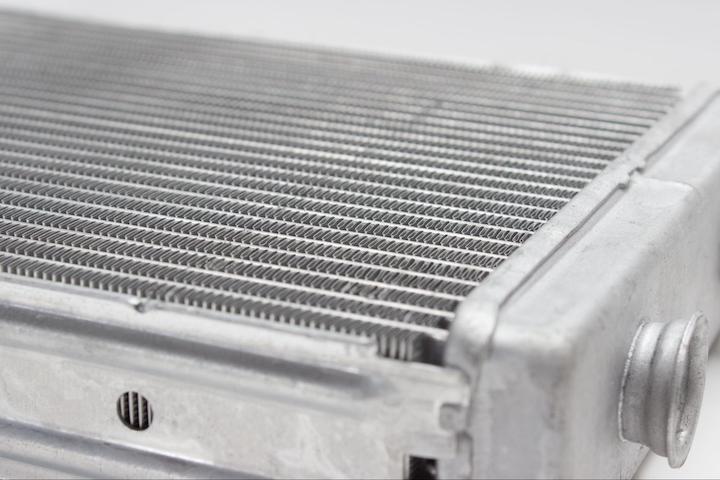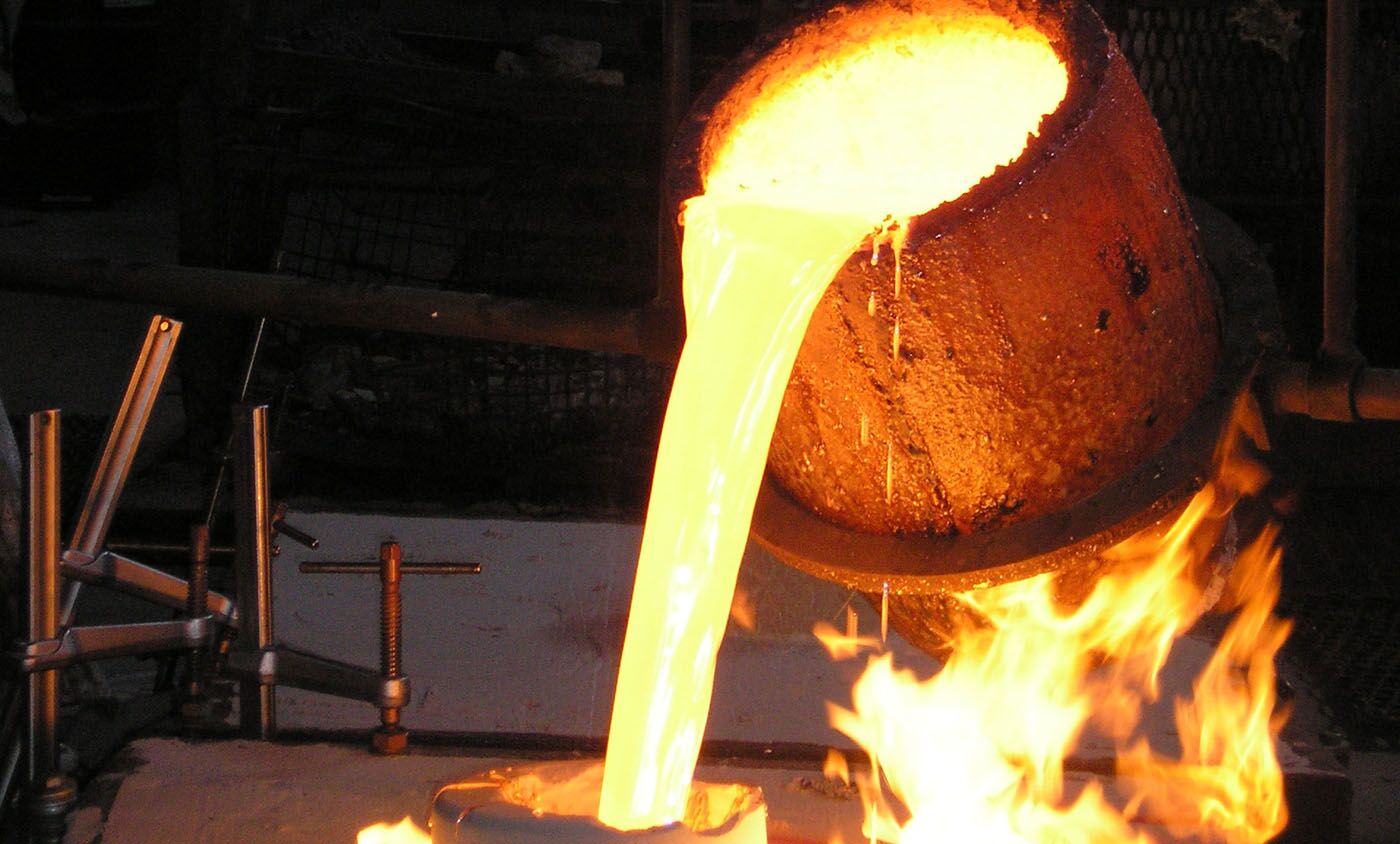Checking Out the Crucial Applications and Use Aluminum Factory in Modern Production
Light weight aluminum shops play an important function in modern-day production, offering varied sectors with their unique residential properties. From auto components that boost fuel efficiency to aerospace structures that focus on weight, light weight aluminum's convenience appears. Its applications extend to building and customer electronics, highlighting its durability and power efficiency. The advancements in aluminum casting techniques and future fads warrant a closer examination, as they might redefine its influence on production.
The Function of Aluminum Foundries in Automotive Production
As the vehicle sector increasingly prioritizes light-weight materials to enhance gas performance and performance, light weight aluminum shops have ended up being crucial factors to manufacturing processes. These factories concentrate on generating elements that meet the stringent needs of contemporary vehicles, such as engine blocks, transmission real estates, and structural elements. Light weight aluminum's favorable homes-- such as high strength-to-weight ratio, deterioration resistance, and exceptional thermal conductivity-- make it a perfect selection for vehicle applications.
Furthermore, aluminum shops use advanced spreading techniques, consisting of die spreading and sand casting, to develop detailed and long lasting parts. This ability permits manufacturers to enhance layouts for performance while reducing weight. Using light weight aluminum also supports sustainability objectives, as it is very recyclable and decreases power intake in vehicles. By facilitating the combination of light weight aluminum right into automotive design, factories play a crucial duty fit the future of the vehicle industry, advertising performance and innovation across the board.
Aerospace Applications: Lightweight Solutions for Flight
Light weight aluminum factories play a substantial duty in the aerospace sector, where the demand for lightweight materials is critical for improving gas performance and efficiency in airplane. The unique homes of light weight aluminum, including its high strength-to-weight proportion and rust resistance, make it a suitable selection for numerous aerospace parts. These parts consist of architectural components, engine coverings, and touchdown equipment, which add to total airplane performance.
The use of light weight aluminum alloys, particularly those established through advanced casting strategies, permits for the manufacturing of complex designs and complex forms while decreasing weight. In addition, light weight aluminum's recyclability lines up with the aerospace industry's sustainability objectives, lowering environmental influence. With continual improvements in aluminum foundry technologies, suppliers can enhance manufacturing processes, resulting in increased performance and minimized costs. As the aerospace sector significantly prioritizes advancements that enhance efficiency, light weight aluminum foundries will certainly stay integral to creating light-weight services for modern-day trip.
Building and Construction: Enhancing Architectural Stability
In the structure and building industry, a significant emphasis is put on improving architectural stability via the use of light weight aluminum. Understood for its high strength-to-weight proportion, aluminum offers resilience without compromising on weight, which is critical in contemporary architectural styles. Its resistance to deterioration even more assures longevity, making it an excellent material for numerous structural elements, consisting of beams, structures, and cladding.
Light weight aluminum also assists in cutting-edge design opportunities, permitting architects and designers to produce aesthetically pleasing structures while preserving safety and security standards. The material's convenience enables its application in both property and business jobs, from high-rise buildings to bridges. In addition, improvements in light weight aluminum shop techniques have improved the precision of aluminum elements, guaranteeing they meet strict building codes. Generally, the assimilation of light weight aluminum in building and construction not just boosts architectural integrity however also adds to lasting building methods, provided its recyclability and energy-efficient production approaches.
Customer Electronic Devices: The Increase of Light Weight Aluminum in Innovation
In the domain name of consumer electronic devices, light weight aluminum has gotten importance because of its lightweight design advantages and superior thermal conductivity. This shift not only enhances item transportability yet likewise enhances device performance by properly dissipating warmth. As modern technology proceeds to progress, the function of aluminum in developing sleek and reliable devices is significantly substantial.
Light-weight Style Advantages
As customer electronics evolve, the need for lightweight yet resilient products has actually surged, making light weight aluminum an increasingly preferred option among suppliers. Its reduced density permits the development of smooth gadgets that are easy to use and lug, significantly boosting mobility. The strength-to-weight ratio of light weight aluminum warranties that products can withstand everyday wear and tear without endangering performance. Additionally, the pliability of aluminum makes it possible for producers to make elaborate forms and forms, better adding to ingenious aesthetic appeals and capability. This lightweight feature also plays a crucial role in power effectiveness, as lighter tools require much less power to operate. Consequently, light weight aluminum not only satisfies the evolving visual needs but likewise straightens with the modern focus on sustainability in customer electronic devices.
Thermal Conductivity Advantages
Thermal conductivity is an essential consider the efficiency of customer electronic devices, and aluminum excels in this domain. Its high thermal conductivity permits efficient heat dissipation, which is essential for preserving optimum operating temperature levels in devices such as mobile phones, laptop computers, and pc gaming consoles. By facilitating rapid warmth move away from delicate parts, light weight aluminum assists prevent getting too hot, therefore enhancing performance and extending tool long life. The light-weight nature of light weight aluminum matches its thermal residential properties, making it an excellent selection for mobile innovation. As suppliers significantly focus on efficiency and energy efficiency, aluminum's duty in thermal monitoring comes to be even more significant, leading to its expanding fostering in contemporary electronic layouts. This pattern highlights light weight aluminum's value in customer electronics innovation.
Marine Sector: Rust Resistance in Harsh Atmospheres
Corrosion resistance is an important aspect in the marine sector, where devices and structures are consistently subjected to severe deep sea settings. Aluminum, particularly in its alloy kinds, read provides significant benefits hereof. Its all-natural oxide layer offers a safety obstacle that prevents deterioration, making it optimal for vessels, anchors, and other aquatic applications.
Marine-grade aluminum alloys, such as 5083 and 6061, are specifically developed to endure the harsh impacts of deep sea and weather. These alloys not only withstand corrosion however also preserve structural stability and toughness in time. Applications vary from hulls and superstructures of ships to components in overseas systems.
The lightweight nature of light weight aluminum further improves its viability, allowing boosted fuel effectiveness and convenience of handling - Aluminum Casting. As the aquatic sector continues to concentrate on longevity and performance, aluminum stays an essential material selection for resisting rust popular aquatic settings
Developments in Light Weight Aluminum Spreading Techniques
While traditional aluminum spreading approaches have actually served the sector well, current innovations are changing the landscape of aluminum manufacturing. Techniques such as 3D printing of molds and cores are getting grip, permitting fast prototyping and reduced preparations. This advancement allows producers to produce intricate geometries that were formerly hard to achieve with standard spreading techniques. In addition, advancements in die-casting modern technology, including the use of high-pressure die-casting (HPDC), have improved the precision and surface area coating of actors light weight aluminum elements, bring about boosted efficiency in different applications.
The fostering of investment casting has actually enabled for higher design freedom and lowered product waste. Developments in alloy compositions are additionally substantial, as they improve mechanical residential properties and deterioration resistance. Generally, these developments not just enhance production procedures however also add to more sustainable methods within the aluminum shop industry, making it adaptable to the progressing demands of modern-day production
Future Patterns in Light Weight Aluminum Factory Manufacturing
The future of light weight aluminum foundry production is poised for considerable transformation with automation, look at this website boosting efficiency and accuracy in making processes. Sustainable techniques are increasingly coming to be a priority, as factories look for to decrease their environmental effect while fulfilling growing regulative needs. Additionally, improvements in alloy growth will certainly enable the development of more powerful, lighter products customized for varied applications, driving development in the market.
Automation in Shop Processes

Sustainable Production Practices
An expanding emphasis on lasting production practices is improving the future of aluminum foundry manufacturing. Market leaders are increasingly taking on energy-efficient innovations and recycling campaigns to reduce waste and reduce carbon impacts. Making use of recycled light weight aluminum significantly decreases energy intake contrasted to primary light weight aluminum production, making it a favored choice for ecologically conscious makers. Furthermore, cutting-edge casting strategies are being created to improve material efficiency and lower discharges. Companies are likewise buying renewable power resources, such as solar and wind, to power their operations sustainably. aluminum foundry. By incorporating these practices, the light weight aluminum shop industry not just fulfills regulative needs but likewise reacts to consumer demand for greener products, inevitably leading the way for a more lasting manufacturing landscape
Advanced Alloy Advancement
Innovations in aluminum alloy advancement are readied to play a substantial role in the future of factory manufacturing, especially as sustainability and performance demands intensify. The market is significantly focusing on creating high-strength, lightweight alloys that can stand up to severe conditions while lessening ecological influence. Scientists are discovering innovative compositions, such as aluminum-lithium and aluminum-scandium alloys, which promise improved mechanical properties and decreased weight. Furthermore, the integration of advanced manufacturing techniques, including additive manufacturing and precision casting, enables more complex geometries and reduced material waste. As regulative pressures and consumer preferences shift in the direction of greener choices, the growth of energy-efficient and recyclable alloys will certainly be vital. The future landscape of light weight aluminum shop manufacturing depends upon these developments in alloy innovation.

Regularly Asked Inquiries
What Are the Ecological Impacts of Light Weight Aluminum Foundry Workflow?
Light weight aluminum foundry operations can cause considerable ecological effects, including greenhouse gas discharges, energy usage, and waste generation. In addition, incorrect management of pollutants may bring about dirt and water contamination, impacting local ecosystems and areas.
Exactly How Does Light Weight Aluminum Recycling Affect Factory Processes?
Light weight aluminum recycling boosts factory procedures by giving a cost-efficient raw material, minimizing energy consumption and discharges. This sustainable technique boosts efficiency, decreases waste, and supports the round economic climate, benefiting both makers and the environment.
What Safety And Security Procedures Are Implemented in Light Weight Aluminum Foundries?
Aluminum factories implement different safety procedures, including personal safety equipment, appropriate air flow systems, routine safety and security training, fire prevention methods, and equipment maintenance treatments to reduce threats and assure a risk-free functioning setting for all employees.
Exactly How Do Foundries Ensure High Quality Control in Light Weight Aluminum Casting?
Factories assure quality control in aluminum spreading through rigorous product inspections, accurate temperature level surveillance, standardized procedures, and routine screening of actors products. These steps assist keep uniformity, reduce problems, and satisfy sector specifications efficiently.
What Are the Expense Aspects in Light Weight Aluminum Shop Production?
Expense aspects in light weight aluminum shop manufacturing consist of basic material prices, energy consumption, labor costs, equipment maintenance, and overhead costs. Furthermore, manufacturing quantity and intricacy of styles considerably affect general production expenses and earnings.
As the vehicle market increasingly focuses on light-weight go right here products to boost gas performance and efficiency, light weight aluminum shops have actually ended up being vital factors to producing processes. Aluminum foundries play a substantial duty in the aerospace field, where the need for lightweight materials is paramount for boosting gas performance and performance in aircraft. In addition, innovations in light weight aluminum foundry techniques have actually enhanced the precision of light weight aluminum components, ensuring they meet rigorous building codes. While conventional light weight aluminum spreading methods have actually offered the industry well, current advancements are transforming the landscape of light weight aluminum production. The use of recycled light weight aluminum considerably lowers energy consumption contrasted to main light weight aluminum manufacturing, making it a preferred selection for environmentally aware producers.